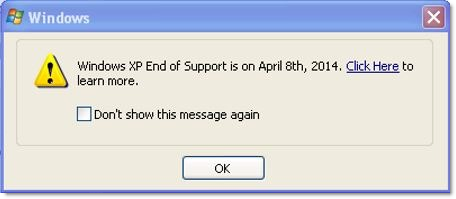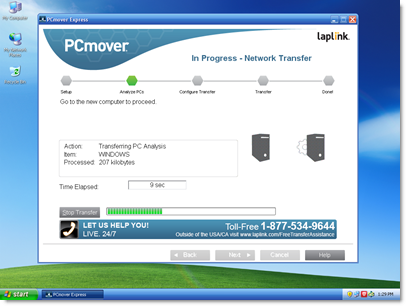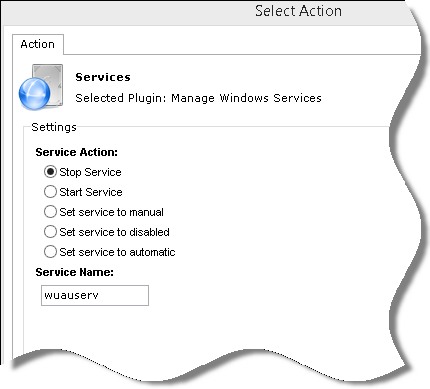How to Configure Exchange Server 2010 Outlook Anywhere
In this tutorial I will demonstrate how to enable and configure
Exchange Server 2010 Outlook Anywhere to provide secure mailbox connectivity for remote Outlook users.
Outlook Anywhere is a much better solution for remote email access
than POP or IMAP because the end user experience is the same when the
user is using Outlook on the LAN or remotely. Thanks to SSL encryption
Outlook Anywhere is also inherently more secure than other protocols
that have non-encrypted options that companies often deploy.
What is Outlook Anywhere?
Outlook Anywhere is a service provided by the
Client Access server role that allows Outlook clients to make a secure connection over
SSL/HTTPS
to the mailbox from remote locations. Previously this was known as
RPC-over-HTTPS but was renamed to Outlook Anywhere in Exchange 2007 and
2010.
By wrapping normal Outlook RPC requests in HTTPS the connections are
able to traverse firewalls over the common SSL/HTTPS port without
requiring the RPC ports to be opened.
There are three main tasks to deploy Outlook Anywhere in an Exchange environment:
- Enable and configure Outlook Anywhere on the Client Access server
- Configure the perimeter firewall to allow SSL/HTTPS connections from external networks to the Client Access server
- Configure the Outlook clients to use Outlook Anywhere when connecting from remote networks
Enable Outlook Anywhere on Exchange Server 2010
In the
Exchange Management Console navigate to
Server Configuration ->
Client Access, and select the Client Access server you want to enable for Outlook Anywhere.
If you have multiple Client Access servers in an Active Directory
site then choose the one that is the internet-facing Client Access
server. Or if you have deployed a
CAS array you will need to repeat this process on all members of the array.

Choose the Exchange Server 2010 Client Access Server to configure for Outlook Anywhere
With the server selected, in the action pane of the Exchange Management Console click on
Enable Outlook Anywhere.

Enable Outlook Anywhere for Exchange Server 2010
The Enable Outlook Anywhere wizard launches. Enter the external host
name for Outlook Anywhere users to use when connecting remotely to
Exchange, and choose an authentication method.

Configure Outlook Anywhere for Exchange Server 2010
The external host name you choose should ideally be one that is already included in the
Exchange certificate configured on the Client Access server. Otherwise you will need to
create a new certificate for Exchange.
The Outlook Anywhere authentication method you choose will depend on a few factors in your environment.
- Basic Authentication – this requires that Outlook
users enter their username and password each time they connect to
Outlook Anywhere. The credentials are sent in clear text so therefore
it is critical that Outlook Anywhere connections only occur over
SSL/HTTPS. You may need to choose Basic Authentication if the
connecting computers are not members of the domain, if the ISA Server
publishing rule and listener are shared with other Exchange services
that require Basic Authentication, or if the firewall being used does
not support NTLM authentication.
- NTLM Authentication – this is ideal for connecting
clients that are domain members because the username and password will
not need to be entered by the user each time they connect. However NTLM
may not work with some firewalls or ISA Server publishing scenarios.
When you have configured the Outlook Anywhere settings click
Enable to continue, and then click Finish to close the wizard.
The Outlook Anywhere configuration for Exchange 2010 will take effect
within 15 minutes of completing the wizard. The Application Event Log
will record Event ID 3008 and a series of other events when the
configuration has been applied to the server.
Configure the Firewall for Exchange Server 2010 Outlook Anywhere
To enable remote Outlook users to connect to Outlook Anywhere the
perimeter firewall for the network must be configured to allow the
SSL/HTTPS connections to pass through to the Client Access server.
The precise steps for this will depend on which firewall you are
using in your environment. However the basic components of this
configuration are:
- A public DNS record for the external host name you are using for Outlook Anywhere
- A public IP address on the firewall that the public DNS record resolves to
- A NAT or publishing rule to allow SSL/HTTPS connections to reach the Client Access server

Exchange Server 2010 Outlook Anywhere Firewall Overview
If you are running an internet-facing
Exchange Server 2010 CAS array then you would configure the firewall rule to direct traffic to the CAS array IP address.
Configure Outlook Clients for Exchange Server 2010 Outlook Anywhere
Before an Outlook client can connect to Outlook Anywhere it needs to
be configured with the correct settings. In Outlook 2010 open the
Account Settings for the Outlook profile that is configured.

Outlook 2010 Account Settings for Exchange Server 2010 Outlook Anywhere
Double-click to open the properties of the Exchange Server profile that is configured.

Outlook 2010 Exchange Server Profile Settings
Click on
More Settings, and then select the
Connection tab of the settings dialog box that appears.

Outlook 2010 Connection Settings
Tick the box to
Connect to Microsoft Exchange using HTTP, and then click the
Exchange Proxy Settings button.

Enable Outlook Anywhere in Outlook 2010
Enter the
External Host Name that was configured for Outlook Anywhere earlier on the Client Access server, and then configure the
Proxy Authentication Settings to match the client authentication method chosen on the server.

Configure the Outlook Anywhere External Host Name and Authentication Settings in Outlook 2010
Click
OK,
OK,
Next and then
Finish to apply the change to Outlook 2010. You must restart Outlook for the new settings to take effect.
Now that Outlook 2010 has been configured for Exchange Server 2010
Outlook Anywhere, any time the user launches Outlook from a remote
connection and can reach the perimeter firewall over the internet they
will be able to securely access their mailbox as though they were still
on the corporate network.
Original Link:

















 These are complete servers specially designed for ultra-compact vertical arrangement within a standardized
These are complete servers specially designed for ultra-compact vertical arrangement within a standardized These are small form factor servers housed in blade
enclosures, which are designed for modularity and high-density
footprints (enabling you to fit more servers into a smaller space). A
blade enclosure includes server blades and room for storage, in addition
to many shared components—power, cooling and ventilation, networking
and other interconnects—all controlled by an integrated management
system.
These are small form factor servers housed in blade
enclosures, which are designed for modularity and high-density
footprints (enabling you to fit more servers into a smaller space). A
blade enclosure includes server blades and room for storage, in addition
to many shared components—power, cooling and ventilation, networking
and other interconnects—all controlled by an integrated management
system.















